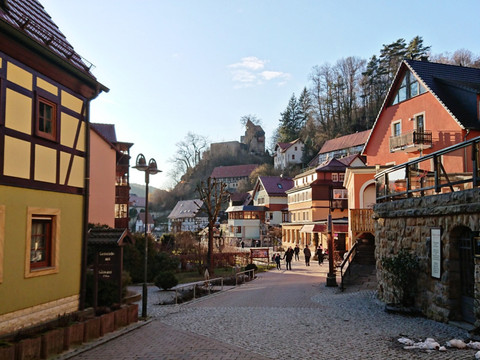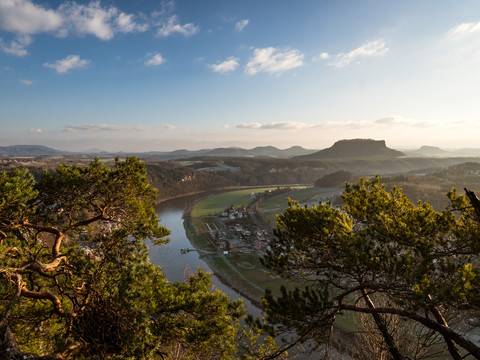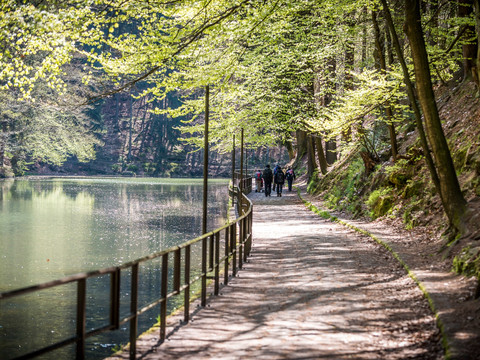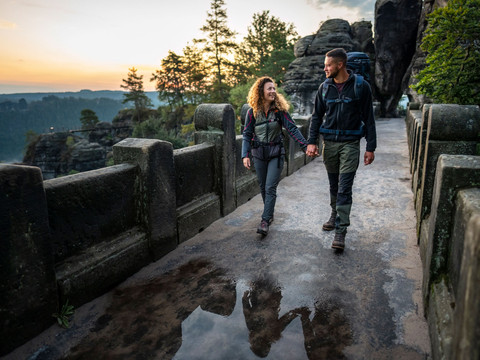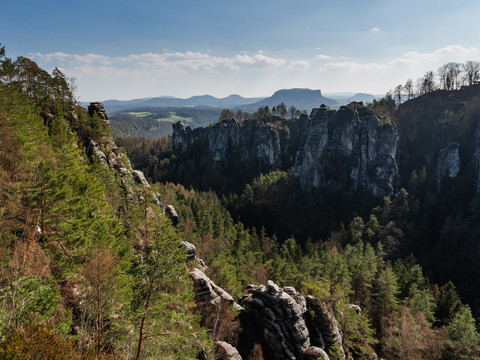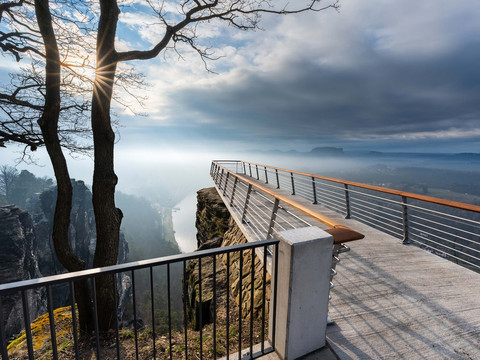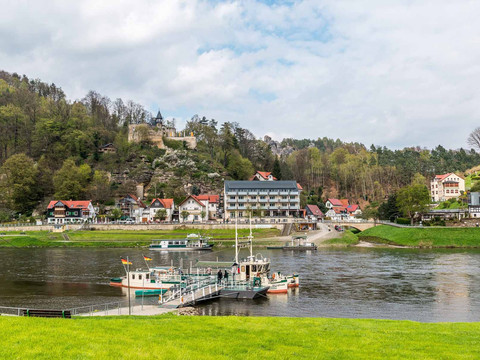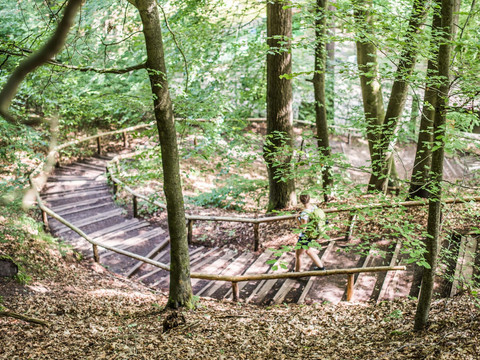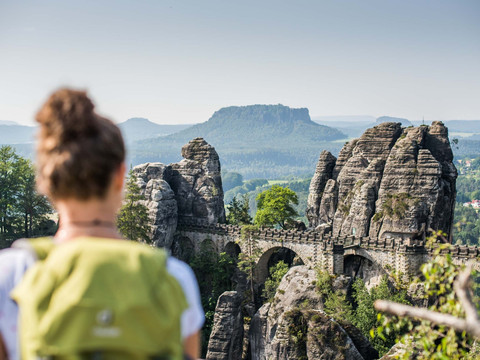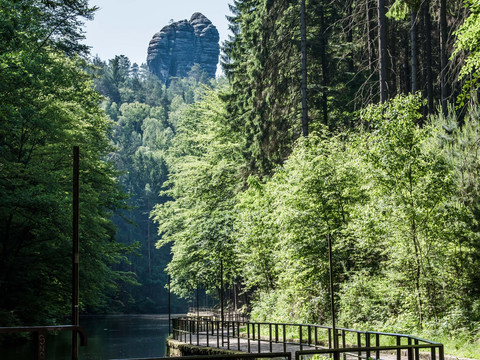The hike starts at the station in the spa town Rathen. You cross the river by ferry (not part of the transport association, must be paid separately) and walk through the car-free town. Follow the signposts to the left towards Bastei. Now the route continuously ascends, keep left at the next fork (blue mark) and climb numerous stairs.
Don't miss the detour at the Tiedgestein. A first spectacular view into the Elbe valley. Back on the path, you climb more steps. Here there is another worthwhile detour to the Kanapee viewpoint.
Soon you pass through a rock gate that Caspar David Friedrich immortalized in one of his famous paintings. And you are already standing on the Bastei bridge built in 1851.
Directly after the Bastei bridge, you can go right to the Ferdinanda viewpoint before you reach the famous Bastei viewpoint on the left. After the 190 meters elevation difference, you are rewarded with a comprehensive panoramic view: At your feet the famous sandstone cliffs and on the horizon the table mountains south of the Elbe.
Then continue towards the buildings and follow the blue marking towards Schwedenlöcher. Right behind the Bastei hotel is another hidden viewpoint, the Wehlstein viewpoint. From here, follow the forest path initially parallel to the road and parking lots, before turning right to reach a resting place. Here the Pavillon viewpoint is recommended to enjoy a complete view of the Bastei before descending from the Bastei massif into the deep, wild gorge of the Schwedenlöcher.
After many stairs, you reach the Amselgrund. Once down, keep right (green mark) and pass the Amsel lake. Here you can rent a rowboat for a small fee. The path leads back to Rathen. In town, keep right and walk back to the ferry to get to the S-Bahn station on the other side of the Elbe.
Where do the Schwedenlöcher actually get their name?
The name goes back to the 17th century, specifically the time of the Thirty Years’ War (1618-1648), when the Swedes marched through the land. They had a reputation for robbing, destroying, and plundering everything. The then inhabitants of the adjacent villages brought their possessions—and themselves—to safety in the gorges or “holes.” The rugged rock formations offered many good hiding places. The adventurous but also romantic gorge leads us between moss-covered green walls and rough rocks over two steep iron ladders and about 700 steps down from the Gansweg to the Amselgrund.

